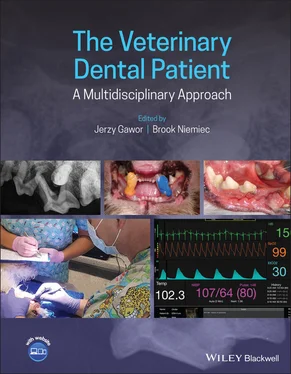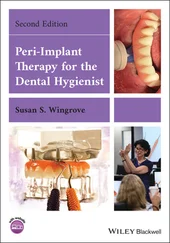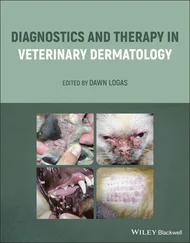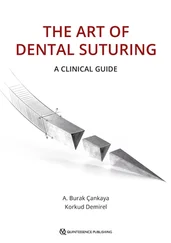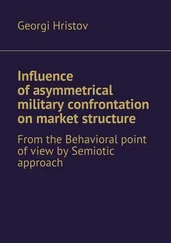9 Hall, M.A., Camacho, F., Dugan, E., and Balkrishnan, R. (2002). Trust in the medical profession: conceptual and measurement issues. Health Serv. Res. 37 (5): 1419–1439.
10 Holmstrom, S.E., Bellows, J., Juriga, S. et al. (2013). AAHA dental care guidelines for dogs and cats. J. Am. Anim. Hosp. Assoc. 49: 75–82.
11 Kanji, N., Coe, J.B., Adams, C.L., and Shaw, J.R. (2012). Effect of veterinarian–client–patient interactions on client adherence to dentistry and surgery recommendations in companion animal practice. JAVMA 240 (4): 427–436.
12 Kruger, J. and Dunning, D. (1999). Unskilled and unaware of it: how difficulties in recognizing one's own incompetence lead to inflated self‐assessments. J. Pers. Soc. Psychol. 77 (6): 1121–1134.
13 Lue, T., Pantenburg, D.P., and Crawford, P.M. (2008). Impact of the owner–pet and client–veterinarian bond on the care that pets receive. JAVMA 232 (4): 531–540.
14 Mehrabian, A. (1981). Silent Messages: Implicit Communication of Emotion and Attitude. Belmont, CA: Wadsworth.
15 Perry, R. (2014). Final year veterinary students' attitudes towards small animal dentistry: a questionnaire‐based survey. J. Small Anim. Pract. 55 (9): 457–464.
16 Pink, D.H. (2012). To Sell Is Human. New York: Riverhead.
17 Schmidt, P.L. (2007). Evidence‐based veterinary medicine: evolution, revolution or repackaging of veterinary practice? Vet. Clin. Small Anim. 37: 407–417.
18 Shaw, J.R. (2006). Four core communication skills of highly effective practitioners. Vet. Clin. Small Anim. 36: 385–396.
19 Shaw, J.R., Adams, C.L., Bonnett, B.N. et al. (2004). Use of the roter interaction analysis system to analyze veterinarian–client–patient communication in companion animal practice. JAVMA 225 (2): 222–229.
20 WSAVA (2018) Global Dental Guidelines. Available from https://wsava.org/global‐guidelines/global‐dental‐guidelines/(accessed July 5, 2020).
3 Teaching Veterinary Dentistry
Zlatko Pavlica1, Jerzy Gawor2, and Lisa Mestrinho3
1 University of Ljubljana, Ljubljana, Slovenia
2 Veterinary Clinic Arka, Kraków, Poland
3 Faculty of Veterinary Medicine, University of Lisbon, Portugal
This chapter was written for several reasons. First, to highlight the importance of education to the proper development of veterinary dentistry. Second, to present the current situation, which is plagued by a lack of systemic solutions, leading to low competence among veterinary graduates in the field of dentistry. And third, to discuss the requirement to provide efficient veterinary dental education.
Dentistry is part of the clinical sciences: a vast field of veterinary science based on practical learning and training.
In clinical disciplines, students should acquire skills based on the model of Miller’s pyramid of clinical competence (Miller 1990), from the knows , to the knows how , to the shows how , to the does . At the base of this pyramid is fact gathering, progressing to an upper level of interpretation and application, followed by demonstration of learning, and finally performance integrated into practice ( Figure 3.1).
There are several aspects and fields of veterinary dental education in which Miller’s principles are applied. Teaching at university or college (addressed to future veterinarians or nurses) is key to achieving graduate competence. Continuous professional development (CPD) helps in the development and extension of skills. Finally, public education improves awareness of the importance of oral health among pet owners.
3.2 Veterinary Dentistry in Europe's University Curricula
Several current documents list the minimum requirements for veterinary education among establishments of higher education (Directive 78/1027) and regulate professional qualification (Directive 2005/36), but without defining or describing veterinary specialization as they would for human doctors. At all European universities, veterinarians must qualify after a five‐ or six‐year curriculum, comprising a bachelor degree (three years) plus a master's degree (two years), as set out in the Bologna Process (2005).
The first Global Conference in Paris (2009) identified the need to define minimum competences that newly graduated veterinarians must have in order to provide veterinary services. The recommendations on veterinary day‐one competencies were first produced by the World Organization of Animal Health (OIE 2012). Although such recommendations do not have a legal power, nowadays, with the work of the European Association of Establishments of Veterinary Education (EAEVE), through the certification of European universities, they have improved the institutional education throughout Europe.
The Joint European Veterinary Dental Society (EVDS)/ European Veterinary Dental College (EVDC) Statement on Clinical Competencies in Small Companion Animal Dentistry and Oral Surgery states the following:
Veterinarians must possess scientific knowledge and be able to demonstrate practical skills in order to perform basic diagnostic and treatment procedures in veterinary dentistry and oral surgery, independently, at the time of graduation. At a minimum, veterinary graduates must be competent in providing entry‐level dental and oral health care for small companion animals. The veterinary university/school/college must provide training for students to meet day‐1 and for veterinarians to meet year‐1 and year‐3 competencies in small companion animal dentistry and oral surgery. Academic institutions that provide evidence for offering appropriate learning and continuing education opportunities in that regard may – upon thorough review of these opportunities – be awarded an endorsement by EVDS/EVDC.
(EVDS and EVDC 2014)
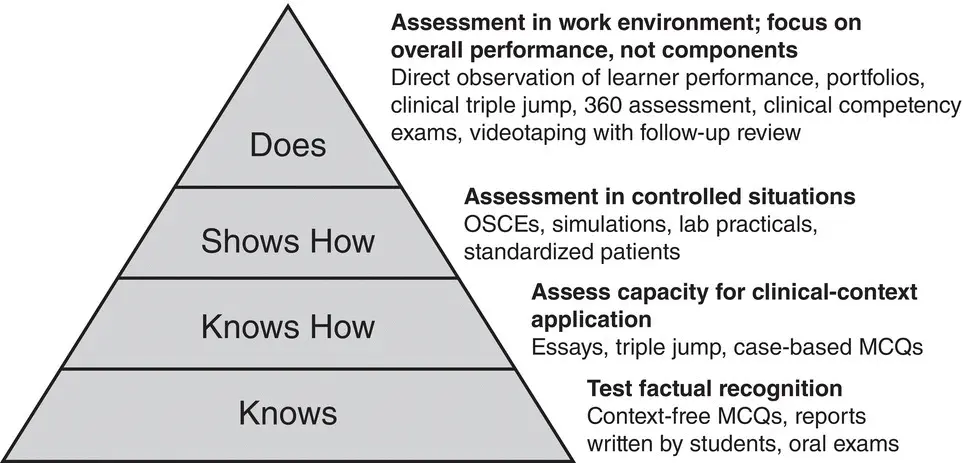
Figure 3.1 Framework for clinical assessment.
Source: Based on Miller (1990).
Day‐one skills include the following veterinary dental procedures ( www.evds.org):
Obtain a history for a dentistry and oral surgery patient
Perform an oral examination in a conscious and anesthetized patient
Distinguish between normal and abnormal oral and maxillofacial anatomy
Utilize nomenclature accepted in dentistry and oral surgery
Use the modified Triadan system for numbering teeth
Identify and name normal anatomical structures on a dental radiograph
Interpret and fill out an oral examination assessment form
Demonstrate the use of a dental explorer, periodontal probe, and dental mirror
Perform a professional dental cleaning with scaling and polishing
Explain and demonstrate home oral care/hygiene measures
Recognize and relieve pain in dentistry and oral surgery patients
Understand the rational use of antibiotics in dentistry and oral surgery
Know when and how to refer a dentistry and oral surgery patient to a specialistIt is remarkable that there are no surgical skills on this list, despite extraction being a very frequent surgical oral procedure. These skills are intentionally included in year‐1 and year‐3 competencies for the veterinarian as a part of their CPD.
3.3 How Is Veterinary Dentistry Taught in Universities? What Is Missing?
Since oral health must be incorporated into primary care, dentistry should be an obligatory subject (as opposed to an elective) for all small‐animal‐oriented students. However, there seems to be a disconnection between the required classes in the standard veterinary curriculum and the skills required in everyday practice.
Читать дальше
